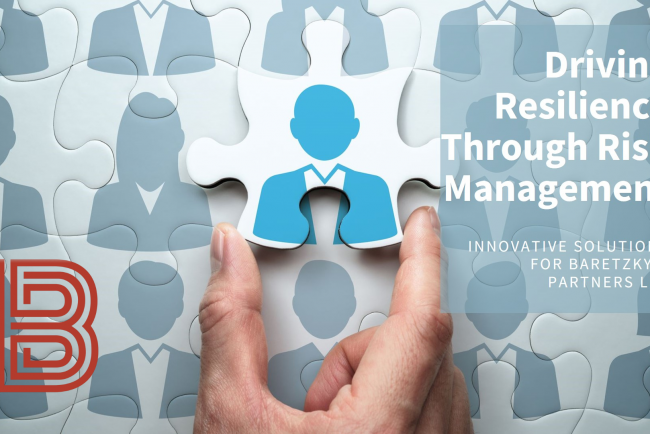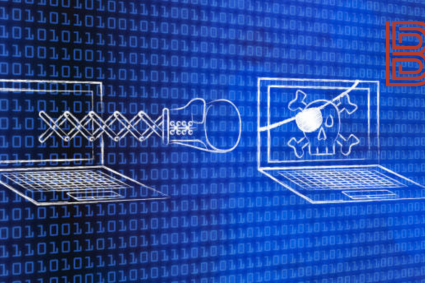Baretzky and Partners Latest News
Risk Mitigation and Compliance

by Admin
The Role of Risk Management in Corporate Governance
Introduction Corporate governance refers to the framework of rules, practices, and processes used to direct and control organizations. It involves balancing the interests of a company’s stakeholders, including shareholders, management, customers, suppliers, financiers, government, and the community. A critical component of effective corporate governance is […]
NewsRroom
by Admin
Baretzky & Partners LLP: Driving Resilience Through Risk Management and Innovation
In today’s volatile and fast-paced global environment, businesses face challenges that test their ability to adapt, survive, and thrive. From navigating complex regulatory landscapes to countering sophisticated cyber threats, organizations must constantly evolve to remain competitive. Baretzky & Partners LLP stands as a trusted partner […]
NewsRroom
by Admin
Data Risk Intelligence: Redefining Data Risk Visibility in Proactive Risk Mitigation
Introduction In an era driven by data, organizations increasingly rely on information to gain competitive advantages, enhance decision-making processes, and deliver superior customer experiences. However, as the volume, velocity, and variety of data expand, so does the complexity of managing the associated risks. Data breaches, […]
NewsRroom




Cyber risk appetite refers to the level of cyber risk an organization is willing to accept in pursuit of its objectives.
by Admin
In the context of cyber risk management, defining this appetite is crucial for guiding decisions related to cybersecurity investments, policies, and strategies. The first step in establishing a cyber risk appetite is understanding the organization’s business goals and the associated risks. This involves balancing security […]
NewsRroom
by Admin
Bribery and Corruption Investigations: Uncovering Malfeasance in Organizations
Bribery and corruption are global challenges that undermine the integrity of organizations and threaten the fairness of markets. Investigating these illegal activities within an organization is a complex and sensitive process, requiring methodical approaches, expertise, and adherence to legal and ethical standards. Corruption can manifest […]
NewsRroom
by Admin
Payment Gateway in Money Laundering Risk Management
Payment gateways, essential in the processing of online transactions, have become a focal point for money laundering concerns. As digital commerce expands, so does the potential for criminals to exploit these platforms to launder illicit funds. Managing the risks associated with payment gateways is, therefore, […]
NewsRroom
by Admin
Baretzky & Partners LLC: Leading Experts in Information Policy and Security
In today’s digital landscape, protecting sensitive data and ensuring the resilience of information systems have become critical priorities for organizations worldwide. Baretzky & Partners LLC stands at the forefront of this domain, specializing in the development of robust information security policies that align with both […]
NewsRroom
by Admin
The rise of artificial intelligence (AI) has brought significant benefits, but it also raises concerns about data privacy.
AI systems rely heavily on vast amounts of data to function, often including sensitive personal information like location, browsing habits, and health data. This collection and use of data introduce new risks, as AI systems can inadvertently expose private information or be exploited by malicious […]
NewsRroom
by Admin
Surveillance privacy and security play a critical role in modern data risk management.
As organizations increasingly collect, store, and analyze data through surveillance systems, including CCTV, biometric scanners, and digital tracking tools, they face significant challenges in safeguarding this information while respecting individuals’ privacy rights. One of the primary concerns is the balance between security and privacy. Surveillance […]
NewsRroom
by Admin
Alternative Dispute Resolution (ADR) in Legal Risk Management
Alternative Dispute Resolution (ADR) refers to a set of practices used to resolve legal disputes without resorting to traditional litigation. It plays a critical role in legal risk management by offering companies and individuals methods to manage conflicts efficiently, reducing the risks and costs associated […]
NewsRroom
by Admin
Baretzky & Partners LLC: Strengthening National Cyber Defense Systems
In an era where cyber threats are increasing at an unprecedented rate, ensuring national security has taken on new dimensions. The vulnerabilities of governments and critical infrastructure to cyber attacks have made it imperative for nations to bolster their defense mechanisms. Baretzky & Partners LLC, […]
NewsRroom
by Admin
Offensive Security in Cyber Risk Management: A Proactive Approach to Threat Mitigation
In today’s digitally connected world, cyber risk management has become a critical business function. With the increasing sophistication of cyber threats, traditional defensive strategies are no longer sufficient. Organizations must not only defend their systems from attackers but also anticipate potential vulnerabilities. This is where […]
NewsRroom
by Admin
Legal and compliance risk management is a critical process for organizations to ensure they operate within the boundaries of the law and industry regulations.
It involves identifying, assessing, and mitigating risks associated with legal obligations and regulatory requirements that could lead to financial losses, reputational damage, or legal penalties.Legal Risk Management focuses on potential violations of laws, regulations, contracts, or litigation risks. This includes understanding relevant laws, assessing the […]
NewsRroom





















